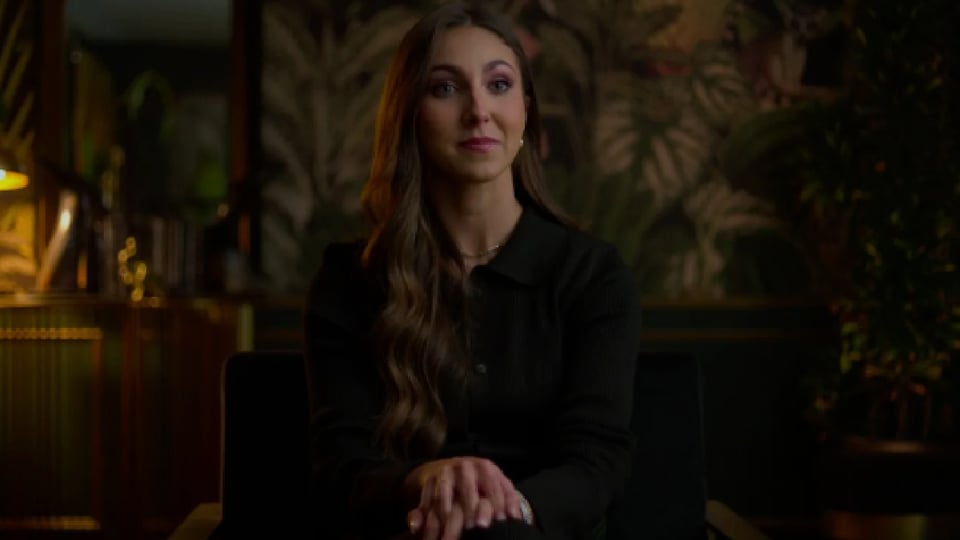Dancing for the Devil: The 7M TikTok Cult might be the busiest true crime title ever
the true crime that's worth your time

Remember, paid subscribers get every Best Evidence article sent to their inboxes, free readers can click through.
Technical note: The Docket is on vacation this week, but will return on Thursday June 13 with a discussion of There is No Ethan. See you then!
Have you noticed how certain tabloids pack, like, three run-on sentences into a headline in hopes that one of the words will be SEO-nip enough to give them a lucrative traffic pop? Like "Eve Batey puts on leggy display days after cleaning up gross dump left by one of two foster greyhounds: four-year-old Eddie or two-year-old George."? New Netflix true crime series Dancing for the Devil: The 7M TikTok Cult feels like its following the same strategy, with someone on the marketing team explaining the separate audience circles that will hit play for "dancing" "devil" or "TikTok." And, honestly, it's too bad! There's a genuine story lurking somewhere beneath the scummy title and some of the more used car salesman aspects to the series.
This is the first time director Derek Doneen has veered into traditional true crime: he's only directed one other film, a doc about Nobel honoree Kailash Satyarthi called The Price of Free. That lack of experience might be why so much of in DftD feels like its attempting to copy other, more solidly built true crime templates. It might also explain why the show's pacing seems so off.
The titular "devil" of the series isn't satan at all. It's Robert Shinn, the pastor of an alleged cult called Shekinah Church who also acts as a talent manager for a number of his parishioners by way of a company called 7M. I say alleged because Shinn has never been charged criminally for any of the allegations against him, and a civil case by former members of his church is still ongoing.
As depicted in the documentary, Shinn is clearly shady — previous members of his church paint a picture of a high-control cult that involved labor trafficking and abuse, and moments such as a frustrated interaction between sisters who escaped at different times have a painful, deeply real poignancy that one rarely sees in more historically-driven accounts of cults from the past. Watching these women, especially a survivor named Priscylla, is the heart of the series.
Sadly, that's consumed by what was likely considered the "grabbier" angle of social media drama. Miranda Derrick is the person you'll most remember from the series, a dancer (then named Miranda Wilking) who moved to LA with her sister, Melanie, to seek fame and fortune.
Or at least follows and likes, as TikTok and other video-based platforms have provided a new way for folks in the incredibly competitive field of dance to attract attention. That's also where the drama between members of the Wilking played out, likely attracting the folks who would end up making this show.
After Miranda fell in with Shinn's church and management company, her TikTok audience skyrocketed—and at the same time, her relationship with her family grew more distant. Her family, understandably, freaked out, flying to her Shinn-sponsored residence and eventually posting increasingly accusatory videos of their own. Miranda, for her part, maintains to this day that she's not in a coercive situation, and even issued a statement of her own refuting some of her family's claims. It's since become a topic for the social media commentariat.
It's the Miranda narrative that eats up the majority of Dancing for the Devil's minutes, and it's also why this series lacks the oomph it should. There is a story here, about Shinn's documented pattern of problematic and allegedly abusive behaviors, but the filmmakers allow it to be overshadowed by the Wilking family's Instagram (etc) based-disputes.
By the middle of the third episode, you'll start to wonder if Miranda maybe had the right idea to get away from these folks, who seem so desperately opposed to her living her own life. I know that sounds horrible to say, but the way the show depicts the two sides, you'll wonder if Miranda jumped from her controlling family's frying pan to Shinn's fire. Then you'll wonder why these people don't just have a face-to-face conversation with a mediator if they want to work things out — and if they don't, why they can't just go their separate ways. Family estrangement is the new black, after all.
I am here for it if someone wants to thoroughly and thoughtfully investigate Shinn’s past and present to illuminate how he’s attracted so many people to his church. But this series isn’t it. The decision to focus on the lowest-hanging fruit is truly to its detriment, but that also provides an opportunity for another, surer-handed director to come in and tell this story the right way.
Add a comment: